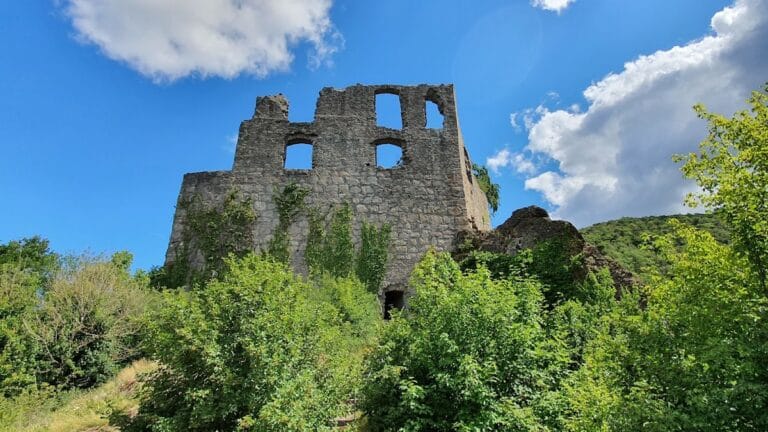Burg Perlenberg: A 12th-Century Hill Castle Ruin in Germany
Visitor Information
Google Rating: 4.1
Popularity: Very Low
Google Maps: View on Google Maps
Country: Germany
Civilization: Unclassified
Remains: Military
History
Burg Perlenberg is a hill castle ruin situated near the municipality of Bann in Germany. It was built in the 12th century during the period of the Staufer dynasty, a significant ruling family of the Holy Roman Empire.
The castle was constructed as part of a strategic defensive system designed to protect the imperial palace located in nearby Lautern. Its position suggests it was intended to oversee and control the road linking Kaiserslautern and Landstuhl, critical locations in the region. Evidence from the masonry indicates high-quality craftsmanship typical of imperial constructions at the time.
By the 16th century, the castle had already fallen into ruin. The name “Perleburg” itself is derived from a 1542 document that refers to the site as “Birleberg.” This document relates to territorial disputes between the Electoral Palatinate, a significant territorial state within the Holy Roman Empire, and the noble Sickingen family. The name “Perleburg” was thus not original but adopted later in historical references.
In the early 20th century, the forgotten ruins of Burg Perlenberg were rediscovered and studied through archaeological excavation. Christian Mehlis conducted the first significant investigation in 1901. Following his work, some of the castle’s stones were quarryed until at least 1913. Renewed excavation and preservation efforts took place between 1959 and 1963, contributing to our understanding of the site. Today, the remnants of Burg Perlenberg are owned and preserved by the state of Rhineland-Palatinate.
Local tradition speaks of a hidden underground passage connecting Burg Perlenberg to the Deutschherrenkomturei Einsiedeln, a nearby commandery in Kaiserslautern. While this tale has become part of the castle’s lore, no archaeological findings have confirmed the existence of such a tunnel.
Remains
The remaining structure of Burg Perlenberg is dominated by the stump of a square bergfried, or main tower. This defensive tower, typical of medieval castles in Germany, was built in the 12th century using finely cut rusticated ashlar masonry—a technique involving large rectangular stone blocks with rough faces and smooth edges. The tower’s base features a carefully shaped profile, indicating skilled craftsmanship and design comparable to other notable castles like Landeck and Wildenberg.
Measuring roughly nine meters on each side, the bergfried’s walls are approximately 1.5 meters thick, providing substantial fortification. The design of its base resembles that of the shield wall at Landeck Castle, suggesting an architectural approach common to castles built during the Staufer era.
No other structural remains of the castle have been found, implying that either the castle was never fully completed beyond the tower or that other buildings have not survived the passage of time. Today, the bergfried remains as a fragmentary ruin set atop a small plateau known as the “Kleiner Berg,” at an elevation of 371 meters. The site is surrounded by steep slopes and a forest reserve, lending it a secluded and natural setting.
Access to the ruin follows an unmarked path beginning near Einsiedlerhof and passing by the Kolbenwoog pond. The path ascends steeply to the castle’s hilltop. Once prized for its expansive views, the summit plateau is now enclosed by tall trees. While the dense woodland limits the vista, the isolated position of Burg Perlenberg continues to reflect its original strategic purpose in controlling the surrounding landscape.







